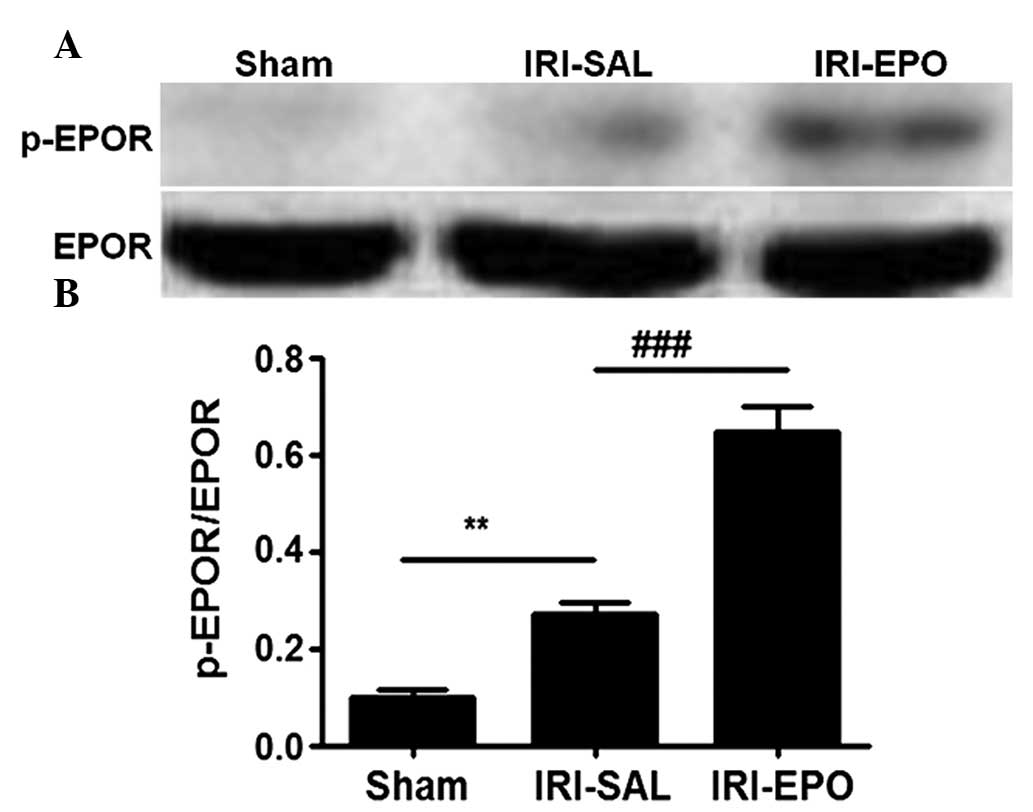|
1
|
Chen K, Li G, Geng F, et al: Berberine
reduces ischemia/reperfusion-induced myocardial apoptosis via
activating AMPK and PI3K-Akt signaling in diabetic rats. Apoptosis.
19:946–957. 2014. View Article : Google Scholar : PubMed/NCBI
|
|
2
|
Yan X, Qiu W, Jia B, et al: Myocardial
protection by interferon-γ late preconditioning during
cardiopulmonary bypass-associated myocardial ischemia-reperfusion
in pigs. Oncol Rep. 30:2145–2152. 2013.PubMed/NCBI
|
|
3
|
Lassaletta AD, Elmadhun NY, Zanetti AV, et
al: Rapamycin treatment of healthy pigs subjected to acute
myocardial ischemia-reperfusion injury attenuates cardiac functions
and increases myocardial necrosis. Ann Thorac Surg. 97:901–907.
2014. View Article : Google Scholar : PubMed/NCBI
|
|
4
|
Du X, Hu X and Wei J: Anti-inflammatory
effect of exendin-4 postconditioning during myocardial ischemia and
reperfusion. Mol Biol Rep. 41:3853–3857. 2014. View Article : Google Scholar : PubMed/NCBI
|
|
5
|
Kim HJ, Joe Y, Kong JS, et al: Carbon
monoxide protects against hepatic ischemia/reperfusion injury via
ROS-dependent Akt signaling and inhibition of glycogen synthase
kinase 3beta. Oxid Med Cell Longev. 2013:3064212013. View Article : Google Scholar : PubMed/NCBI
|
|
6
|
Hofmann BT and Jücker M: Activation of
PI3K/Akt signaling by n-terminal SH2 domain mutants of the p85α
regulatory subunit of PI3K is enhanced by deletion of its
c-terminal SH2 domain. Cell Signal. 24:1950–1954. 2012. View Article : Google Scholar : PubMed/NCBI
|
|
7
|
Chen L, Wei X, Hou Y, Liu X, et al:
Tetramethylpyrazine analogue CXC195 protects against cerebral
ischemia/reperfusion-induced apoptosis through PI3K/Akt/GSK3β
pathway in rats. Neurochem Int. 66:27–32. 2014. View Article : Google Scholar : PubMed/NCBI
|
|
8
|
Palis J: Primitive and definitive
erythropoiesis in mammals. Front Physiol. 5:32014. View Article : Google Scholar : PubMed/NCBI
|
|
9
|
Jelkmann W: Physiology and pharmacology of
erythropoietin. Transfus Med Hemother. 40:302–309. 2013. View Article : Google Scholar : PubMed/NCBI
|
|
10
|
Yang C, Zhao T, Lin M, et al: Helix B
surface peptide administered after insult of ischemia reperfusion
improved renal function, structure and apoptosis through beta
common receptor/erythropoietin receptor and PI3K/Akt pathway in a
murine model. Exp Biol Med (Maywood). 238:111–119. 2013. View Article : Google Scholar : PubMed/NCBI
|
|
11
|
Zhang Q, Bian H, Li Y, Guo L, Tang Y and
Zhu H: Preconditioning with the traditional Chinese medicine
Huang-Lian-Jie-Du-Tang initiates HIF-1α-dependent neuroprotection
against cerebral ischemia in rats. J Ethnopharmacol. 154:443–452.
2014. View Article : Google Scholar : PubMed/NCBI
|
|
12
|
Liu X, Xie W, Liu P, et al: Mechanism of
the cardioprotection of rhEPO pretreatment on suppressing the
inflammatory response in ischemia-reperfusion. Life Sci.
78:2255–2264. 2006. View Article : Google Scholar : PubMed/NCBI
|
|
13
|
Meij JT, Sheikh F, Jimenez SK, et al:
Exacerbation of myocardial injury in transgenic mice overexpressing
FGF-2 is T cell dependent. Am J Physiol Heart Circ Physiol.
282:H547–H555. 2002. View Article : Google Scholar : PubMed/NCBI
|
|
14
|
Zhang S, Lv JW, Yang P, et al: Loss of
dicer exacerbates cyclophosphamide-induced bladder overactivity by
enhancing purinergic signaling. Am J Pathol. 181:937–946. 2012.
View Article : Google Scholar : PubMed/NCBI
|
|
15
|
Liu H, Guo X, Chu Y and Lu S: Heart
protective effects and mechanism of quercetin preconditioning on
anti-myocardial ischemia reperfusion (IR) injuries in rats. Genes.
545:149–155. 2014.
|
|
16
|
Jia Y, Mo SJ, Feng QQ, et al:
EPO-Dependent activation of PI3K/AKT/FOXO3a signalling mediates
neuroprotection in in vitro and in vivo models of Parkinson's
disease. J Mol Neurosci. 53:117–124. 2014. View Article : Google Scholar : PubMed/NCBI
|
|
17
|
Jun JH, Jun NH, Shim JK, Shin EJ and Kwak
YL: Erythropoietin protects myocardium against ischemia-reperfusion
injury under moderate hyperglycemia. Eur J Pharmacol. 745:1–9.
2014. View Article : Google Scholar : PubMed/NCBI
|
|
18
|
Lu MJ, Chen YS, Huang HS and Ma MC:
Erythropoietin alleviates post-ischemic injury of rat hearts by
attenuating nitrosative stress. Life Sci. 90:776–784. 2012.
View Article : Google Scholar : PubMed/NCBI
|
|
19
|
He W, Wang Z, Zhou Z, et al:
Lipopolysaccharide enhances Wnt5a expression through toll-like
receptor 4, myeloid differentiating factor 88, phosphatidylinositol
3-OH kinase/AKT and nuclear factor kappa B pathways in human dental
pulp stem cells. J Endod. 40:69–75. 2014. View Article : Google Scholar : PubMed/NCBI
|
|
20
|
Zhang J, Yao Y, Xiao F, et al:
Administration of dexamethasone protects mice against
ichemia/reperfusion induced renal injury by suppressing PI3K/AKT
signaling. Int J Clin Exp Pathol. 6:2366–2375. 2013.PubMed/NCBI
|
|
21
|
Wang J, Li L and Jiang H: c-Cbl inhbition:
A novel therapeutic approach for attenuating myocardial ischemia
and reperfusion injury. Int J Cardiol. 186:50–51. 2015. View Article : Google Scholar : PubMed/NCBI
|
|
22
|
Lin Y, Chen L, Li W and Fang J: Role of
high-mobility group box-1 in myocardial ichemia/reperfusion injury
and the effect of ethyl pyruvate. Exp Ther Med. 9:1537–1541.
2015.PubMed/NCBI
|
|
23
|
Yao HC, Yang LJ, Han QF, et al:
Postconditioning with simvastatin decreases myocardial injury in
rats following acute myocardial ischemia. Exp Ther Med.
9:1166–1170. 2015.PubMed/NCBI
|
|
24
|
Rafiee P, Shi Y, Su J, et al:
Erythropoietin protects the infant heart against
ischemia-reperfusion injury by triggering multiple signaling
pathways. Basic Res Cardiol. 100:187–197. 2005. View Article : Google Scholar : PubMed/NCBI
|














